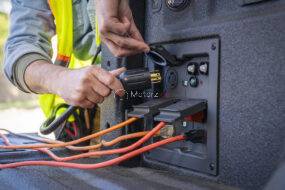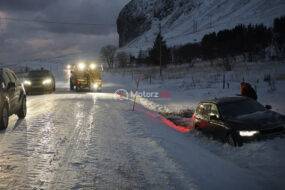Lane Departure Warning How lane departure systems work In recent years, automotive technology has advanced at an unprecedented pace, transforming the driving experience and, more importantly, enhancing safety on the roads. One notable innovation in this realm is the Lane Departure Warning (LDW) system, a feature designed to mitigate the risks associated with unintentional lane drifting. This article delves into the intricacies of Lane Departure Warning, exploring its underlying technology, how it operates, and the potential impact it has on road safety.
Understanding Lane Departure Warning Systems:
Lane Departure Warning systems are a subset of Advanced Driver Assistance Systems (ADAS) that employ various sensors and cameras to monitor a vehicle’s position within its lane. The primary goal is to alert the driver if the vehicle unintentionally deviates from its lane without the use of turn signals. The technology behind LDW systems has evolved to provide increasingly sophisticated and accurate warnings.
Camera-Based Systems:
A common implementation of Lane Departure Warning relies on cameras strategically placed within the vehicle. These cameras continuously capture images of the road ahead and analyze the lane markings. Advanced image processing algorithms then interpret this data to determine the vehicle’s position within the lane.
Sensor Fusion:
To enhance accuracy, many modern LDW systems utilize sensor fusion, combining data from multiple sources. In addition to cameras, sensors such as radar and lidar contribute to a more comprehensive understanding of the vehicle’s surroundings. This multi-sensor approach minimizes the risk of false positives or negatives, ensuring reliable warnings.
Lane Tracking Algorithms:
The core of LDW technology lies in sophisticated lane tracking algorithms. These algorithms assess the captured images or sensor data to identify lane markings and establish the vehicle’s position relative to them. Real-time processing allows for instantaneous decision-making.
Warning Generation:
When the system detects that the vehicle is unintentionally drifting out of its lane, it generates a warning signal. This signal is typically conveyed to the driver through one or more of the following methods. A visual warning may appear on the dashboard or in the side mirrors, often in the form of a flashing icon or a specific color change. An audible alert, such as a beep or chime, can grab the driver’s attention, especially when combined with visual alerts.
Haptic Feedback:
Some vehicles are equipped with systems that provide tactile feedback, such as steering wheel vibrations, alerting the driver without requiring them to take their eyes off the road. To account for varying driving conditions and preferences, many LDW systems offer customizable settings. Drivers can often adjust the sensitivity of the warning system or choose to deactivate it temporarily, allowing for a personalized driving experience.
Reducing Accidents:
Lane Departure Warning By providing timely alerts, these systems give drivers the opportunity to correct their course before a potential collision occurs. Long hours on the road can lead to driver fatigue, increasing the likelihood of lapses in attention. LDW systems act as an additional set of eyes, helping to mitigate the impact of fatigue-related lapses and promoting safer driving practices. LDW systems often complement other ADAS technologies, such as Adaptive Cruise Control and Automatic Emergency Braking. The integration of these features creates a comprehensive safety net, further reducing the risk of accidents.
Conclusion:
Lane Departure Warning systems represent a significant stride in automotive safety technology. Through the integration of cameras, sensors, and advanced algorithms, these systems provide real-time warnings to drivers, helping to prevent accidents caused by unintended lane drifting. As technology continues to evolve, we can expect further refinements in LDW systems, contributing to a safer and more secure driving environment for everyone on the road.





